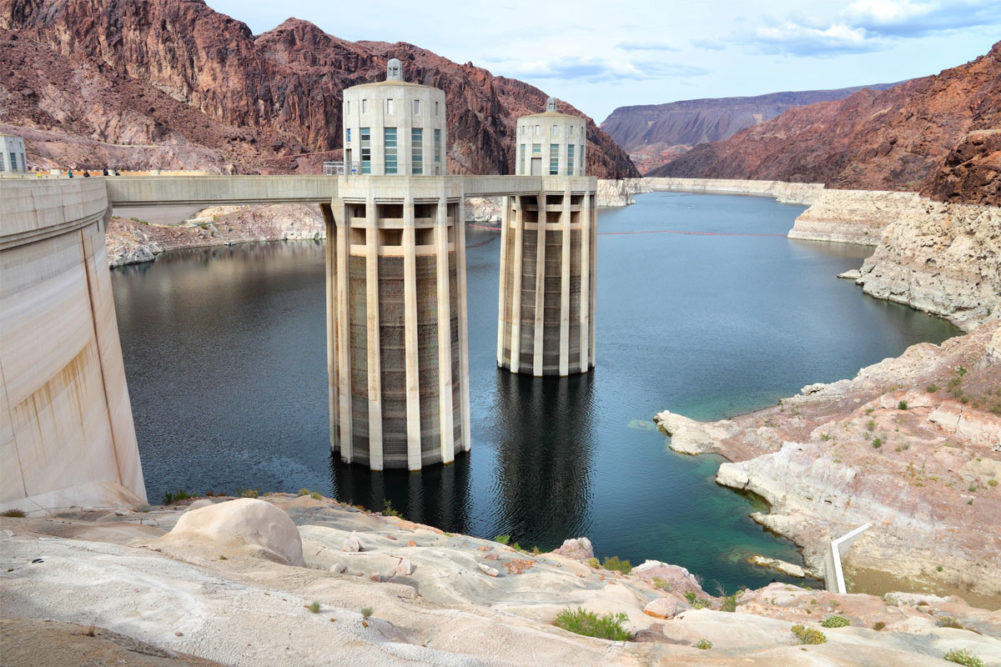KANSAS CITY, MO. — Droughts and floods are naturally occurring phenomenon, but when irrigation and water supplies to one of the nation’s most critical population and agricultural regions is threatened, the concern is ratcheted higher. Such is the case in California and other parts of the West where a megadrought, likely worsened by climate change, continues to spark controversial and expensive proposals.
California, the nation’s top ranking agricultural producer in dollar value due to the output of produce, nuts and other high-value crops, works on a water plan that is updated every five years; the next update will be in 2023. The state is expected to lose 10% of its water by 2040, or about 6 million to 9 million acre-feet of water per year, and current conditions offer reasons for concern. An acre foot of water equals 325,000 gallons. The last 22 years in California have been the driest in at least 1,200 years based on tree ring studies.
The recently signed Inflation Reduction Act of 2022 includes $4 billion for the US Bureau of Reclamation to compensate farmers who voluntarily reduce water deliveries from the Colorado River under short- or multi-year agreements, among other things. While significant, that amount appears to be little more than a drop in the bucket compared with estimates for most long-term proposed remedies.
The Colorado River earlier in August reached a “tier-2” water shortage that requires unprecedented cuts to water use in the Southwest United States and the country of Mexico, in part to avoid water levels from dropping so low that hydroelectricity generation could be threatened.
Governor Gavin Newsom, on Aug. 11, laid out a new water supply strategy that called for collecting and storing more water, recycling more wastewater, better water conservation and desalinating ocean water and salty groundwater.
“California must capture, recycle, de-salt and conserve more water,” to offset higher evaporation and lower supplies due to climate change, the plan said.
Agricultural, environmental and other groups still are assessing the proposed strategy, but support and opposition was almost instant, as may have been suspected since California’s water strategy over the years already was highly controversial.
In general, state water agencies and the agriculture industry supported the plan while researchers and environmental advocates criticized it, according to the Los Angeles Times.
“We applaud Governor Newsom’s bold and comprehensive water infrastructure and management strategy,” said Dave Puglia, president and chief operating officer of Western Growers, which represents farmers in four western states who produce more than half of the nation’s fresh fruits, vegetables and tree nuts. “Our farms are in distress due to water insecurity, increasingly placing millions of Californians in our agricultural regions at great risk of economic harm. To adapt to climate realities, the governor’s plan recognizes the urgent need to build new and improve existing infrastructure and to streamline and improve the practicality of the regulatory processes that govern them. Critically, that means new and expanded surface and groundwater storage to capture wet year flood flows that are too infrequent to be missed. We echo the governor’s sense of urgency and look forward to working with his administration in good faith to turn this plan into action.”
It should be noted that agriculture uses about 80% of California’s water. The plan was criticized in part because it called for cities to reduce water use by 2030 while stabilizing supplies for agriculture that would reduce irrigated farmland by 2040. At least one environmental group wants the state to prioritize water for people’s personal use and the environment over agricultural use. That has long been a point of contention in what is referred to as the state’s complex and “antiquated” water rights system that had its start during the Gold Rush.
“The plan makes no mention of curbing the most intensive water users of the state — ‘big ag’ and ‘big oil,’” said Food & Water Watch, which pushes for renewables like solar and wind power over the use of fossil fuels among other things.
The plan does, however, include possible plans to fallow cropland, collect data on surface water used by farmers, and curtail pumping from rivers and streams for irrigation beyond drought emergencies.
While an initial price tag of $8 billion was given for the governor’s proposed water plan, costs to secure water for California would far exceed that amount. Plans for the construction of a controversial $16 billion, 45-mile-long tunnel to move water from the Sacramento-San Joaquin River Delta’s wetlands to the south were released in July. The Delta tunnel plan included a 3,000-page draft environmental report.
Earlier this year, a proposal in the state Senate called for using $1.5 billion to buy from farmers senior water rights that allow them to use as much water as needed from rivers and streams. An earlier proposal would have set aside $2.9 billion to pay farmers to take acres out of production, including 35,000 acres of rice, equal to about 6% of the state’s rice crop. Also recently, the California Coastal Commission rejected a plan for a new desalination plant mainly for environmental reasons.
Whatever becomes of Governor Newsom’s plan, agriculture will remain at the center of the debate, as it has been for decades.


